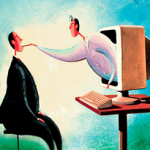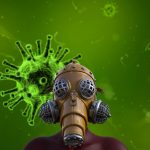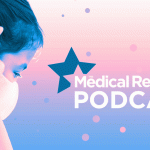The Higgins case in Melbourne shows both why the virus has escaped containment and just how stretched GPs are
The chief medical officer has promised to keep GPs informed directly on COVID-19 with twice-weekly newsletters, as they await distribution of more masks and a decision on telehealth.
And as doctors close ranks to defend Melbourne GP Dr Chris Higgins, the issue of GP sick leave has become a hot topic online.
Health Minister Greg Hunt announced at the weekend that 54 million new masks had been secured for the national medical stockpile.
His office told TMR that the masks had been sourced from a number of countries, and that “decisions on their distribution have not yet been made, but would include Primary Health Networks”.
On Saturday another 260,000 surgical masks were released from the stockpile through PHNs.
More than 7100 people have signed a petition asking Victorian Health Minister Jenny Mikakos to apologise to Dr Higgins for saying she was “flabbergasted” he had worked while positive for COVID-19.
“We also request that you refrain from any further comments that undermine confidence in the medical profession,” says the petition, started by Sydney urologist Professor Henry Woo.
The case of Dr Higgins, who saw a week’s worth of patients without knowing he was infected with SARS-CoV-2, illustrates the ease with which the virus has slipped past containment efforts.
In a Facebook post Dr Higgins says he was returning from the US, not then regarded as a high-risk country, when he developed a “mild cold” – not flu symptoms, as earlier reported – which had “almost resolved” when he decided to return to work. He took a test even though he did not meet the criteria, never expecting it might come back positive.
Melbourne GP Dr Karen Price told ABC News Breakfast Dr Higgins had “gone back to work [with a sniffle] like a lot of us do”.
She said GPs were angry at his scapegoating by the Health Minister because he “really didn’t do anything wrong. He, in fact, went above the guidelines and we really should be thanking him [for alerting us] that we need to be raising our levels of concern and perhaps testing.”
AMA president Dr Tony Bartone told TMR Dr Higgins had “made an informed decision in good faith that he’d largely resolved from the effects of a mild cold, clearly thought that he was no longer infectious from whatever he thought he had at the time, and was not contemplating for a minute the possibility of COVID-19.
“And nor should he, because he certainly doesn’t fit into any of the into the risk guidelines of the appropriate people that should be getting tested.”
Dr Bartone said the lack of sick leave was “another one of the barriers to running a general practice when it comes to viability and sustainability”.
“GPS aren’t able to take sick leave,” he said. “They’re not able to have insurance products, as a rule, that cover very short periods of time off, and then usually waiting periods apply.
“Many GPs are working in one- or two-doctor practices. So clearly if the doctor doesn’t turn up there is no one else to rely on, there’s no redundancy in the system.
“We need to look at all the options that allow the patients who need to be seen to get seen. That’s the other piece of the puzzle here. There was obviously a backlog of patients that needed to be seen on the return of Dr Higgins, for example. There are patients that need ongoing medications or management of chronic and complex disease, and obviously the doctors feel a sense of duty and make a decision in good faith whether to attend the clinic that day.”
The case also demonstrated the urgency of expanding telehealth to minimise virus transmission by milder cases.
“Telehealth is an excellent way of ensuring that the vast majority of people who come down with COVID-19 will not need any health intervention and indeed can be managed safely at home without the need to come down to the surgery, to minimise the risk of infecting people in waiting rooms and other areas on the way to and from the surgery,” Dr Bartone said.
“[Telehealth] makes sense in that we’re utilising doctors’ resources much more efficiently, we’re not wasting valuable PPE, and we’re not having [contact] with very, very mildly affected patients who despite being mild are able to transmit the virus.”
Mr Hunt’s office said telehealth had “a number of advantages, including minimising the use of personal protective equipment”.
“Government is currently considering the time-limited expansion of telemedicine MBS items to enable remote consultation of patients with suspected COVID-19 and at-risk patients who will not want to be exposed to COVID-19 by attending the clinic. More details on these proposed telemedicine items will be announced very soon.”
Professor Murphy, meanwhile, has undertaken to update GPs directly twice a week and provide regular webinars.
“There is the very real possibility that larger scale community outbreaks will occur across Australia, placing a significant burden on the health system, in which you play an absolutely critical frontline role,” he wrote this week.
It was now clear that more than 80% of cases were mild and “not requiring any specific health intervention”, which has only helped its transmissibility. While children were susceptible to the infection, they did not seem to get significantly ill or even symptomatic.
He wrote that it seemed “reasonable to assume” a case-fatality ratio of around 1% in a country like Australia with a strong health system.
This is at variance with statements by Professor Raina MacIntyre, head of biosecurity at the University of NSW’s Kirby Institute, who believes our older population is likely to see a higher mortality than China.
And in a video explainer for the Australian Academy of Science, Professor Robert Booy from Sydney University and The Children’s Hospital at Westmead, says COVID-19 might easily claim as many lives as an average flu season.
“About 3000 might die, that’s the best case estimate I can think of. The worst-case estimate is many thousands.”
Professor Booy, also head of clinical research at the National Centre for Immunisation Research and Surveillance, emphasises that the great majority of cases can self-monitor at home without medical intervention.
“If you have symptoms you are likely only to have a cold: runny nose, a cough, a fever. In that case you can self-monitor at home. The great majority of people do not need to go to their GP or a hospital.”
Only when high-risk patients felt increasingly unwell should they call their GP, who could advise whether to come see them or go to a hospital.
Important clinical questions remain, such as whether a bout of COVID-19 leaves a patient with immunity or whether reinfection is possible.
Professor Ian Mackay, virologist at the University of Queensland – who has been tirelessly tweeting the latest information since the virus was first identified at @MackayIM – says there is now “clear evidence of seroconversion”, or the building up of antibodies post-infection, which implies immunity.
The latest Chinese diagnosis and treatment plan says under serologic testing: “nCoV-specific IgM antibodies usually test positive three to five days after the onset of symptoms; the titre of IgG antibodies is elevated by four times or more in the recovery phase compared with the acute phase”.
Sporadic cases of apparent reinfection, for example in a Japanese woman in Osaka, might be better explained by a false negative test in between two positive ones, Professor Mackay says.
UNSW Professor Bill Rawlinson told Nine newspapers there was not enough data to conclude that reinfection was possible. Another possible explanation for the Japanese case, he said, was that the patient recovered and then fell ill from a different virus, but remnant SARS-CoV-2 segments were still detectable in a test.





